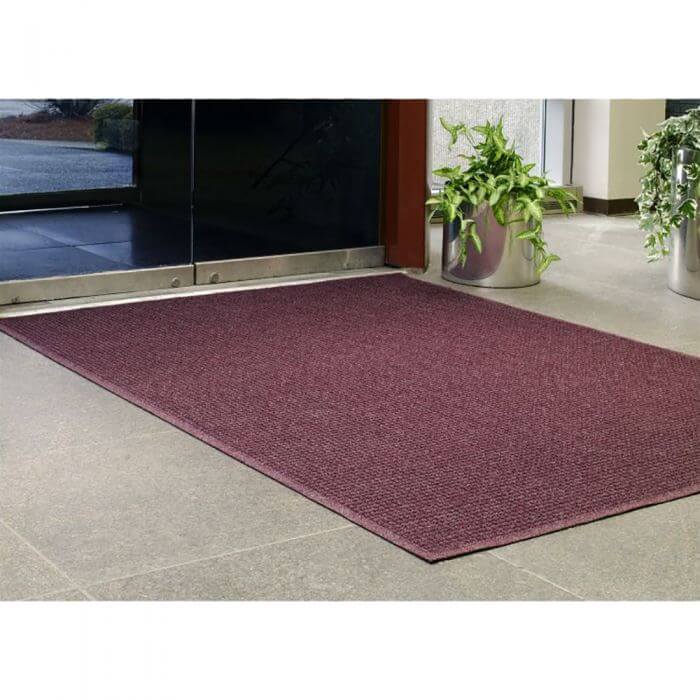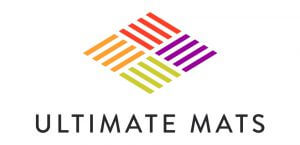
The Longevity of Waterhog Mats
Waterhog mats are renowned for their durability and resilience in various environments.
When people consider purchasing Waterhog mats, their primary concern is the product’s longevity and value for money.
In this article, you will learn:
- The unique materials and construction that make Waterhog mats durable.
- Key factors affecting Waterhog mats’ longevity.
- Effective maintenance tips to extend your Waterhog mat’s life.
- And how long the mats last.
How Long Do Waterhog Mats Last?
Typically, Waterhog mats can last for 5 to 7 years with proper care.
This can be reduced in areas of high footfall or extreme weather and a lack of care.
Understanding Waterhog Mats
Waterhog mats are not just any ordinary entrance mats. Known for their exceptional durability, they serve as the first line of defense against dirt and moisture for countless homes and businesses. These mats are specially designed to withstand heavy foot traffic and diverse weather conditions, making them a popular choice for both indoor and outdoor use.
The secret to their longevity lies in their construction. Waterhog mats are typically made from high-quality, UV-resistant polypropylene fabric that is resistant to staining and fading. This tough material is able to trap dirt and absorb a significant amount of water, which is essential in keeping entryways clean and safe.
But what really sets Waterhog mats apart is their reinforced rubber nubs that prevent the fabric from crushing.
This means that even after years of use, they maintain their effectiveness and appearance. Additionally, the rubber backing is not only non-slip but also resistant to cracking and curling, further adding to the mat’s lifespan.
Understanding these key features is crucial in appreciating why Waterhog mats are such a worthwhile investment for long-term use.
Factors Affecting the Longevity of Waterhog Mats
Waterhog mats are renowned for their durability and effective moisture-trapping capabilities, making them a popular choice for both commercial and residential settings. However, the lifespan of these mats can vary significantly based on several key factors. Understanding these factors can help users maximize the longevity of their Waterhog mats and ensure they remain functional and aesthetically pleasing for as long as possible.
Quality of Material
The first and perhaps most critical factor is the quality of the material used in the mat. Waterhog mats are typically made from high-grade polypropylene, a material known for its resistance to stain, fading, and mildew. This resilience contributes to the mats’ ability to withstand heavy foot traffic and extreme weather conditions without deteriorating rapidly.
Frequency and Type of Use
Another crucial aspect is the frequency and type of use. Mats placed in high-traffic areas, such as public entrances or commercial buildings, will naturally endure more wear and tear compared to those used in a home setting. Additionally, mats exposed to extreme conditions, such as heavy rain, snow, or direct sunlight, may experience faster wear.
Maintenance and Cleaning
Proper maintenance and cleaning also play a significant role in extending the life of Waterhog mats. Regular cleaning, according to the manufacturer’s instructions, helps maintain the mat’s functionality and appearance. This typically involves vacuuming, hosing down, or even machine washing for certain models, ensuring that dirt, debris, and moisture do not accumulate and degrade the mat’s material over time.
Environmental Conditions
Lastly, environmental conditions can impact the longevity of Waterhog mats. Factors such as exposure to chemicals, oils, or other harsh substances can affect the mat’s material integrity. Mats used in industrial settings or areas where they are exposed to such conditions may have a shorter lifespan compared to those used in cleaner, more controlled environments.
Average Lifespan of Waterhog Mats
When investing in Waterhog mats, one of the primary concerns for consumers and businesses alike is their durability and longevity. Understanding the average lifespan of these mats not only helps in making an informed purchase decision but also aids in comparing their longevity to other types of mats available in the market.
Typically, these mats can last anywhere from 5 to 7 years, depending on factors such as the amount of foot traffic, maintenance, and environmental conditions.
This durability is attributed to their high-quality polypropylene fabric and reinforced rubber backing, which resist wear and tear remarkably well.
In comparison, standard entryway mats, which may be made from less durable materials like standard rubber or basic carpet fibers, often have a shorter lifespan, ranging from 1 to 3 years under similar conditions. This difference is significant, especially in high-traffic areas where the mat’s durability is constantly tested.
It’s also worth noting that the maintenance and care of Waterhog mats play a crucial role in their lifespan. Regular cleaning and proper handling can extend their life, ensuring they remain functional and aesthetically pleasing for years. This involves routine vacuuming, spot cleaning, and adherence to the manufacturer’s care instructions.
Maximizing the Durability of Your Waterhog Mats
Waterhog mats are renowned for their durability and effectiveness in trapping dirt and moisture. However, like any product, their lifespan and efficiency can be significantly extended with proper care and maintenance. In this section, we’ll delve into the best practices for maintaining your Waterhog mats, ensuring they serve you well for years to come.
Best Practices for Maintenance and Cleaning
- Regular Cleaning: Regular cleaning is crucial. Shake off loose dirt and vacuum the mats frequently. For a deeper clean, use a carpet cleaner or a mild detergent with water. Rinse thoroughly after washing to remove any soap residue.
- Spot Cleaning for Stains: Address spills and stains immediately. Use a mild detergent and warm water, gently working on the stain. Avoid harsh chemicals that can break down the mat’s fabric and backing.
- Proper Drying: After washing, hang the mats to dry or lay them flat in a well-ventilated area. Avoid folding or wrinkling the mats during the drying process.
Tips for Proper Storage and Usage
- Correct Placement: Place Waterhog mats in areas where they are most needed, such as entrances. Ensure the mat lies flat on the floor without any corners turning up to prevent tripping hazards.
- Storage Tips: When not in use, store Waterhog mats in a dry, flat position. Rolling the mats loosely is acceptable, but avoid folding as this can damage their structure and effectiveness.
- Rotating Mats: If you have multiple mats, rotate their positions periodically. This ensures even wear and tear, especially in high-traffic areas.
Common Mistakes to Avoid
- Using Harsh Chemicals: Avoid cleaning Waterhog mats with harsh chemicals or bleach, as these can deteriorate the fibers and backing of the mat.
- Over Washing: While regular cleaning is important, overwashing can wear out the mats prematurely. Clean only as needed based on the level of foot traffic and dirt accumulation.
- Improper Drying Techniques: Never use high heat to dry Waterhog mats, as this can cause the rubber backing to crack or warp. Air drying is the best method.
By following these guidelines, you can maintain the integrity and functionality of your Waterhog mats, ensuring they continue to protect your floors and present a clean, welcoming entrance to your home or business.
